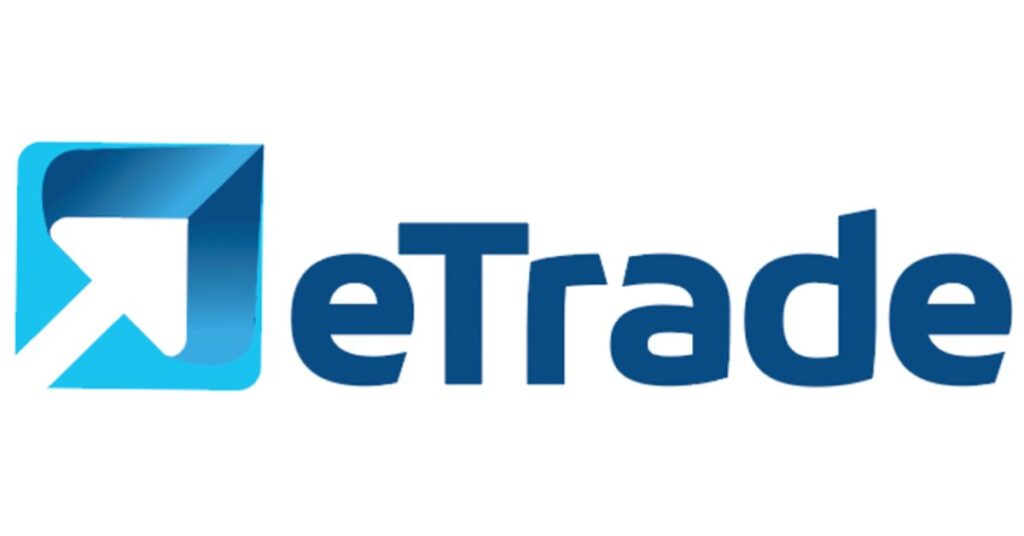
Introduction to Etrade and its Rapid Growth
Etrade, the practice of buying and selling goods and services over the internet, has become an integral part of the global economy. With the ever-growing shift towards digital platforms, e-commerce, or etrade, is not only reshaping how businesses operate but also revolutionizing consumer behavior. The convenience and accessibility of online shopping have made it a staple in the daily lives of millions, and this trend shows no sign of slowing down.
In this article, we will explore the latest developments in etrade, including emerging trends, technological advancements, and how businesses are adapting to meet evolving consumer demands. We will also delve into some of the challenges faced by the etrade industry and how companies are leveraging innovative solutions to address them.
The Growth of Etrade: An Overview
Etrade has witnessed exponential growth in recent years. According to Statista, global e-commerce sales are expected to surpass $6.5 trillion by 2023, with a significant portion of these transactions occurring via mobile devices. As more consumers turn to their smartphones and computers for shopping, businesses are increasingly focusing on creating seamless online experiences. Whether through social media, apps, or websites, the opportunities for retailers to connect with consumers have never been greater.
Key Drivers of Etrade Growth
1. Mobile Commerce: The rise of smartphones and mobile apps has been a game-changer for etrade. Consumers can now shop anywhere, anytime, with a few taps on their phones. This shift towards mobile shopping has prompted businesses to optimize their platforms for mobile devices, ensuring that customers can easily browse, shop, and complete transactions from their mobile screens.
2. Personalized Shopping Experiences: Personalization is a growing trend in the etrade industry. With advancements in artificial intelligence (AI) and machine learning (ML), retailers are able to offer tailored recommendations based on a consumer’s browsing history and preferences. This approach not only enhances the customer experience but also increases conversion rates and customer loyalty.
3. Globalization of E-Commerce: Etrade has also led to the globalization of commerce. Consumers are no longer limited to local or regional marketplaces. They can now purchase products from international retailers with ease, thanks to the internet and logistics companies that facilitate global shipping. This global reach has opened up new opportunities for businesses and enabled them to tap into new customer bases.
Trends Shaping the Future of Etrade
The etrade landscape continues to evolve as new trends emerge, shaping the way consumers interact with online businesses. Let’s take a closer look at some of the most important trends to watch in the coming years.
1. Social Commerce: The Intersection of Social Media and E-Commerce
Social commerce is one of the most exciting trends in etrade. Social media platforms like Instagram, Facebook, and TikTok have integrated shopping features that allow users to purchase products directly through the app. This seamless integration between social media and e-commerce is making it easier for businesses to reach potential customers and for consumers to make purchases without leaving their social feeds.
By blending entertainment with e-commerce, social commerce has the potential to change how products are marketed and sold. Influencer marketing plays a key role in this process, as influencers with large followings can drive sales by promoting products to their audience in a relatable and engaging manner.
2. Artificial Intelligence and Chatbots in Etrade
Artificial intelligence (AI) is another technology that is revolutionizing the etrade industry. AI is being used to enhance customer service, streamline operations, and personalize shopping experiences. One example is the use of AI-powered chatbots, which are increasingly being used by businesses to interact with customers in real time.
These chatbots can answer questions, recommend products, and even assist with the checkout process, all while mimicking the behavior of a human customer service representative. By using AI and machine learning, chatbots become smarter over time, improving their responses and providing more accurate assistance.
3. Voice Commerce: The Rise of Voice Search and Voice-Activated Shopping
Voice commerce is rapidly gaining traction with the rise of virtual assistants like Amazon’s Alexa, Google Assistant, and Apple’s Siri. Consumers can now make purchases using voice commands, adding a new layer of convenience to the online shopping experience. According to a report by OC&C Strategy Consultants, voice shopping is expected to reach $40 billion by 2022.
For businesses, voice commerce presents both challenges and opportunities. Brands need to optimize their content for voice search, ensuring that their products are easily discoverable through voice commands. Additionally, companies need to consider how to create voice-activated shopping experiences that are intuitive and user-friendly.
4. Augmented Reality (AR) in Online Shopping
Augmented reality (AR) is becoming an increasingly popular tool in online shopping, especially in industries like fashion and home decor. AR allows consumers to visualize products in their real-world environment before making a purchase. For example, a shopper could use an AR feature to see how a piece of furniture would look in their living room or try on clothes virtually.
By integrating AR into their platforms, retailers are providing customers with a more interactive and engaging shopping experience. This helps to build consumer confidence and reduces the likelihood of returns, as customers have a better understanding of what they’re purchasing.
5. Sustainable E-Commerce Practices
Sustainability has become a key focus for many consumers, and businesses are increasingly adapting to this demand. In the etrade world, sustainability can take many forms, from offering eco-friendly products to adopting greener shipping practices.
Consumers are now more likely to support businesses that align with their values, particularly those that prioritize the environment. Retailers are responding by implementing sustainable packaging, reducing carbon footprints, and offering carbon-neutral shipping options. This trend is expected to grow in the coming years as more businesses adopt eco-conscious practices to meet consumer expectations.
The Challenges of Etrade
While the etrade industry is booming, it is not without its challenges. Businesses must navigate a rapidly changing landscape, where consumer preferences, technology, and regulatory environments are constantly evolving. Here are some of the major challenges currently facing the etrade industry:
1. Cybersecurity Threats
As online transactions become more prevalent, so do the risks associated with them. Cybersecurity threats, including data breaches and fraud, are a significant concern for both businesses and consumers. Companies must invest in robust security measures to protect their customers’ personal and financial information.
2. Logistics and Delivery Challenges
While e-commerce offers convenience, it also comes with logistical challenges. Meeting consumer expectations for fast, reliable, and affordable shipping can be difficult, especially for businesses that operate on a global scale. The growing demand for faster delivery has led to the rise of same-day and next-day shipping options, but these services come with high costs and operational complexities.
3. Adapting to Changing Consumer Expectations
Consumer expectations are constantly evolving, and businesses must stay ahead of the curve to remain competitive. From offering personalized shopping experiences to providing seamless mobile shopping options, companies must continuously innovate to meet the needs of today’s tech-savvy consumers.
How Businesses are Adapting to Etrade Trends
In response to these challenges and trends, businesses are adopting various strategies to thrive in the ever-changing etrade landscape.
1. Investing in Technology
Companies are increasingly investing in advanced technologies such as AI, machine learning, and big data to enhance their operations and provide better customer experiences. By leveraging these tools, businesses can streamline processes, improve decision-making, and offer more personalized experiences.
2. Omnichannel Retailing
Omnichannel retailing, which integrates physical stores with online platforms, is another strategy that businesses are adopting to stay competitive. This approach allows customers to shop seamlessly across multiple channels, whether it’s in-store, online, or through a mobile app.
3. Enhanced Customer Service
Customer service remains a critical aspect of the etrade experience. Businesses are investing in chatbots, live chats, and AI-powered customer support tools to provide quick and efficient assistance to customers. Additionally, companies are focusing on improving their return and refund policies to enhance customer satisfaction.
Conclusion
Etrade continues to reshape the business world, driven by technological innovations and changing consumer behaviors. From social commerce and AI-powered shopping experiences to the rise of voice and augmented reality, the future of online business is exciting and full of potential. However, with growth comes challenges, and businesses must continue to adapt to remain competitive. By embracing new technologies, enhancing customer service, and focusing on sustainability, companies can succeed in the dynamic world of etrade.
External Resources :
Statista – E-commerce Market Data and Reports
Statista offers comprehensive statistics, charts, and reports on the global e-commerce market, including trends in mobile commerce, digital payment systems, and e-commerce sales forecasts.
Visit Statista’s E-commerce Reports
Shopify – E-commerce Trends and Insights
Shopify’s blog and resources provide practical advice, trends, and insights for e-commerce businesses. Topics include mobile commerce, AI-driven personalization, and how to leverage emerging trends like social commerce.
Visit Shopify Blog
McKinsey & Company – The Future of E-commerce
McKinsey’s research and articles dive into the transformative shifts in the e-commerce industry, offering strategies for adapting to changes such as new customer behaviors and digital innovations.
Visit McKinsey on E-commerce
Forbes – E-commerce Innovations and Trends
Forbes provides articles on the latest e-commerce trends, business models, and technological advancements in the digital retail landscape. It frequently highlights cutting-edge developments like AI, AR, and voice commerce.
Visit Forbes E-commerce
Gartner – E-commerce and Digital Commerce Research
Gartner’s research focuses on emerging technologies in the digital commerce space, including the impact of AI, machine learning, and customer experience innovations on e-commerce platforms.
Visit Gartner’s Digital Commerce Insights
Business Insider – E-commerce News and Analysis
Business Insider provides news, updates, and analysis on global e-commerce trends, including company strategies, technological breakthroughs, and consumer behavior shifts.
Visit Business Insider E-commerce









Leave a Reply